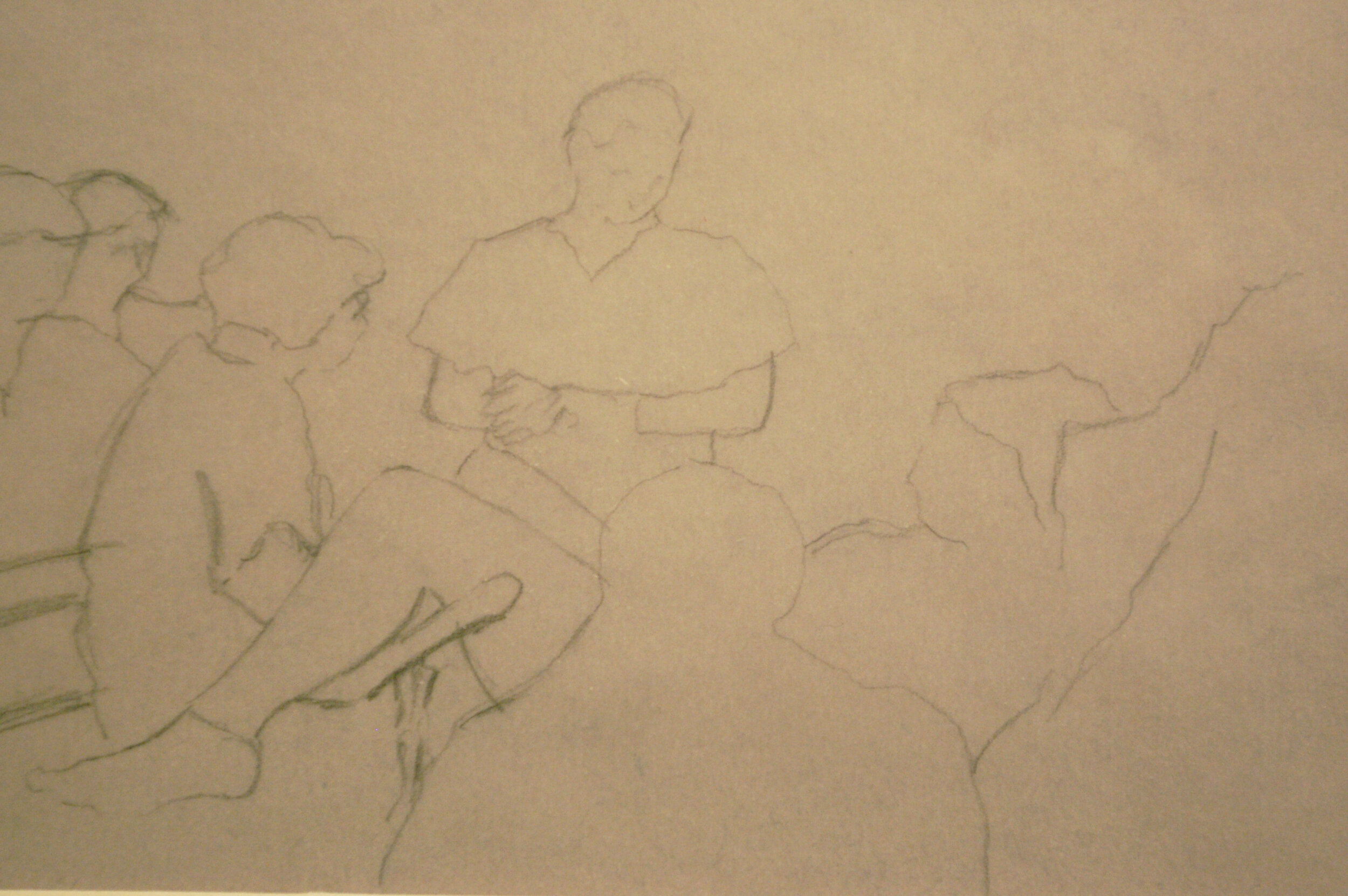Suzanne Holtom
Room 7, T + 4, 2008
Oil on linen
210 x 90 cm
Suzanne Holtom spent 5 weeks working closely with Sarah Vause, obstetrician at St. Mary’s Hospital in Manchester. Suzanne built close relationships with some of the women she met and this became an integral part of her developing work. The obstetrician, Sarah Vause was able to use her experience working with artist Suzanne Holtom to question views and ideas she had about how women and couples think and feel, enabling her to examine the way she behaved and reacted within her doctor/patient relationships. A fascinating example of this two way process was spoken of at Matrix. Sarah revealed that, looking at one particular image Suzanne had drawn of a woman being attended by midwives on a bed in the delivery ward, she suddenly had the insight into how the bed physically created a barrier; that it put the people attending the woman at a physical distance from her. The painting, Room 7 2+4, is the final working up of this idea.
Adebar, 2008
Oil on linen
30 x 75 cm
Suzanne Holtom spent 5 weeks working closely with Sarah Vause, obstetrician at St. Mary’s Hospital in Manchester. Suzanne built close relationships with some of the women she met and this became an integral part of her developing work. Framing this work is Suzanne Holtom’s interest in connecting caesareans to mythology and the title this painting is an example of this mythic link. Adebar is the name of the seemingly benevolent stork taken from Germanic folklore. Roughly translated as luck-bringer, Adebar’s darker side was associated with a wound (gebissen) and an attack on the mother, which explained to children their mother’s confinement in bed following the arrival of their siblings.
Contact, 2008
Oil on Linen
185 x 190 cm
Suzanne Holtom spent 5 weeks working closely with Sarah Vause, obstetrician at St. Mary’s Hospital in Manchester. Suzanne built close relationships with some of the women she met and this became an integral part of her developing work. Contact is a slightly dull, washed out pink (the colour of hospitals), where the application of the paint is out of control, dripping and lactating. This contrasts sharply with the hard-edged technology which surrounds Ildiko, the woman who is depicted engaged in the precious contact time she has with her baby. It is not only the awkward yet absorbed moment of mother and baby that is represented but also the contact between the monitor and the baby, where the monitor measures heart rate, feeding and breathing. Suzanne has come to focus on the site where technology and the body meet. A site which, in the process of birth, can be seen as a place of dependency and conflict, raising issues of care, control, displacement and surveillance.
Forceps Series (Series of 5), 2008
Pencil on Tracing Paper
33 x 24 cm
Suzanne Holtom spent 5 weeks working closely with Sarah Vause, obstetrician at St. Mary’s Hospital in Manchester. Suzanne built close relationships with some of the women she met and this became an integral part of her developing work. Forceps Series was created through the technique of using video footage of women birthing, recorded during her residency, to trace stills from the screen onto tracing paper. Suzanne Holtom’s delicate drawing series illustrates the progressively interventionist forceps delivery of a woman and her baby and the growing audience of medical staff in the room.





